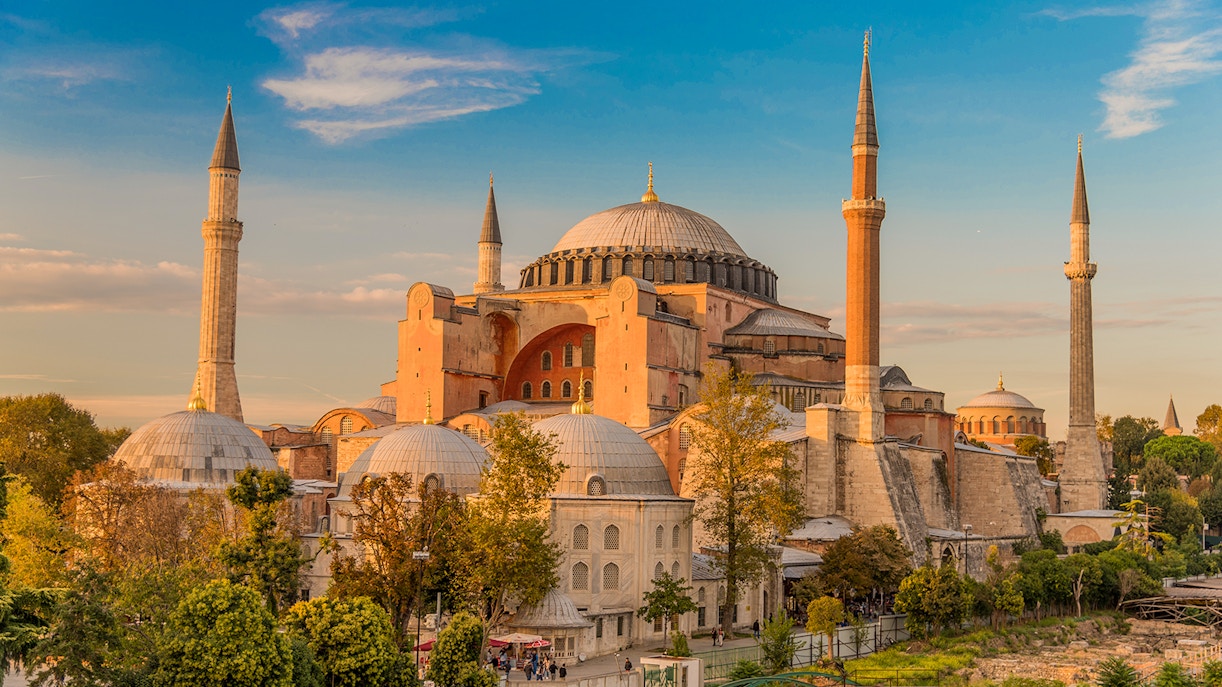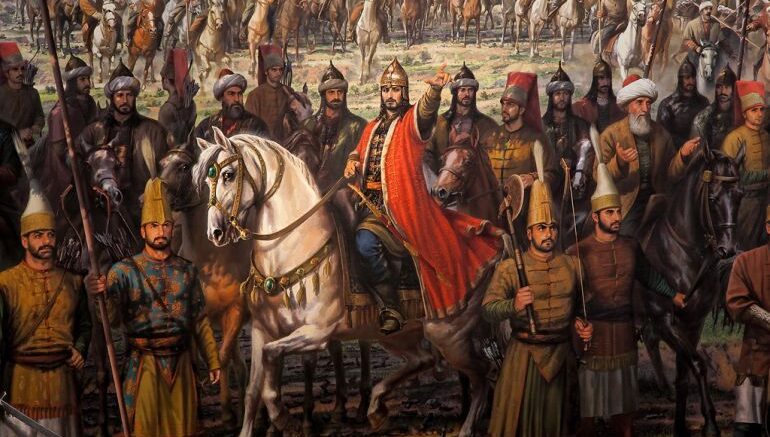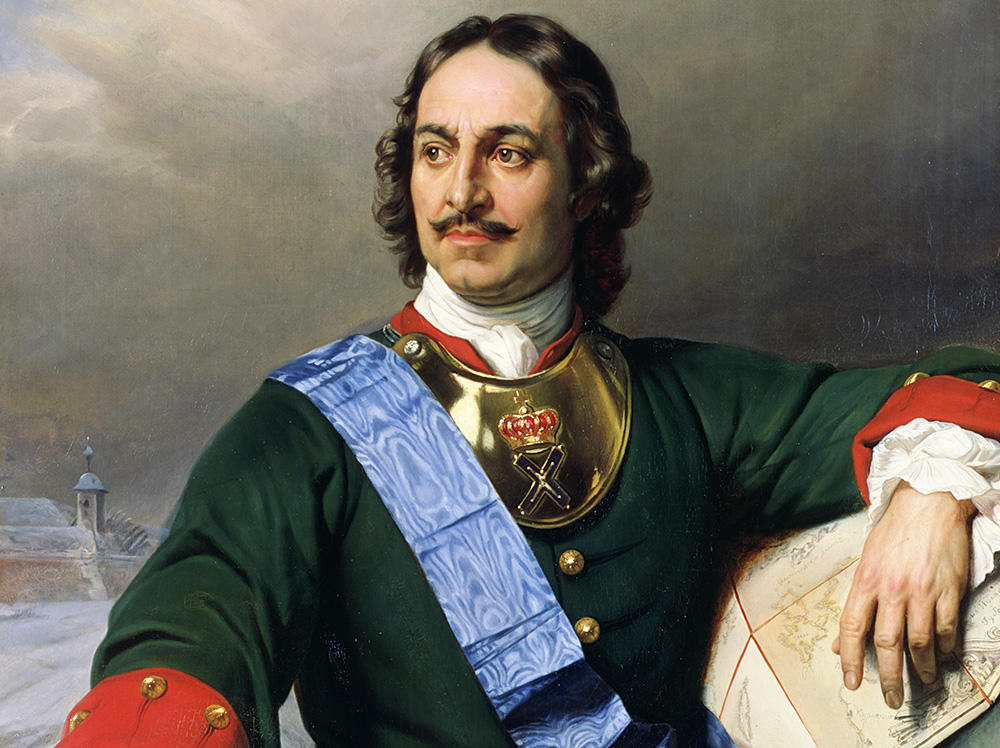The Age of Absolutism occurred in what continent between the 1500's and 1700's?
Europe
This type of government supports the idea that citizens should be able to vote on government policies

Democracy
King Louis XIV (14th) was also known as...

The Sun King
After the Ottomans conquered the capital of Constantinople, they renamed it ___________

Istanbul
The church, originally built in Constantinople during the 6th century, was converted into a mosque by the conquering Ottomans in 1453

Hagia Sofia
Belief that the monarchs were given their power from God. King Louis XVI famously said “A Deo Rex, A Rege Lex,” or “The king is from God, and law is from the king

Divine Right
Enlightenment philosophers used this research process, which was used widely during the Scientific Revolution, to create and test hypothesis/claims about human nature, society, and the role of government
The Scientific Method
This key enlightenment figure believed in natural rights and our right to overthrow the government if those rights aren't protected.

John Locke
These Muslim Turkish-speaking nomads migrated from Central Asia and expanded their empire through conquest from (1300 to 1922)

The Ottomans
Although they were considered religiously tolerant, the Ottomans and Mughals implemented a tax called the Jiyza. What was the Jizya tax?

A tax that was paid by non-muslims
King Louis the XVI (14th) created this lavish personal home outside of Paris, France

John Locke advocated for natural rights, which fall into the categories of ___, ______, and ________.

Life, Liberty, and Property
This enlightenment thinker believed in the separation of powers in the government in order to stop the abuse of power by one person or small group.

Baron de Montesquieu
Based on the map below and your knowledge of social studies, why was the city of Constantinople considered a key city to conquer?

- Constantinople was considered a key trading location due to its placement on the Silk Road and being positioned next to 3 continents.
This 17th and 18th century European intellectual movement focused on using reason and logic to understand and improve society and the government.

The Enlightenment
The belief that monarchs such as Peter the Great and King Louis XIV need to have complete or near complete control of the government.

Absolutism
Identify one way in which John Locke and Thomas Hobbes were similar or different.

Similarity: Both Hobbes and Locke believed governments are created through a social contract between people and rulers.
Difference: Hobbes thought people are naturally selfish and violent, while Locke believed people are reasonable and capable of cooperation.
Difference: Hobbes supported an absolute monarchy to keep order, while Locke supported a limited government that protects rights.
Similarity: Both influenced later political thinkers and ideas about government.
Difference: Locke believed people have natural rights (life, liberty, property) that cannot be taken away, but Hobbes did not.
This Mughal emperor, known as “the Great,” expanded the empire, promoted religious tolerance, and built a strong central government.

Akbar the Great.
Identify at least one method used by Suleiman the Magnificent to gain or maintain power in the Ottoman Empire

1. Centralized government
2. Used elite fighting force called the Janissaries
2. religious tolerance (for example the millet system)
3. Extended the empire to its widest extent (gunpowder played a key role; as did the disunity of their opponents)
4. Reinforcing Islamic law (sharia law)
when you need permission

consent
identify at least 2 characteristics of an absolute monarch

- Created laws and dispenses justice
- Controls the military
- Power over religious authorities
- Limits or controls the power of the nobles
- Centralized government power
Indentify 3 enligtenment thinkers and one key belief each one had
John Locke - Natural Rights
Montesquieu- Separation of Powers
Voltaire- Freedom or speech and religion
Thomas Hobbes’ Absolutism
Mary Wollstonecraft - equal treatment for women
This 18th century (1700's) Russian monarch promoted westernization (adopted customs from Western Europe), built up the military forces, and promoted education and the arts.

Peter the Great
Identify and explain at least 2 similarities and/or differences that illustrate how the Ottoman and Mughal empires gained and maintained power

Both the Ottomans and Mughals used strong militaries
Both empires blended cultures and religions to maintain power
Ottomans relied more on Islam and centralized government
Both supported art, architecture, and trade to show their wealth and power
- Unlike the Ottomans, who organized non-Muslims into the millet system, the Mughals ruled over a mostly Hindu population and created policies of religious tolerance to maintain control.
- Unlike the Mughals, who blended Hindu and Muslim traditions, the Ottomans ruled with a stronger emphasis on Islamic law and centralized government under the Sultan.
This female English writer argued for women’s education and equality in her 1792 work A Vindication of the Rights of Woman.

Mary Wollstonecraft
